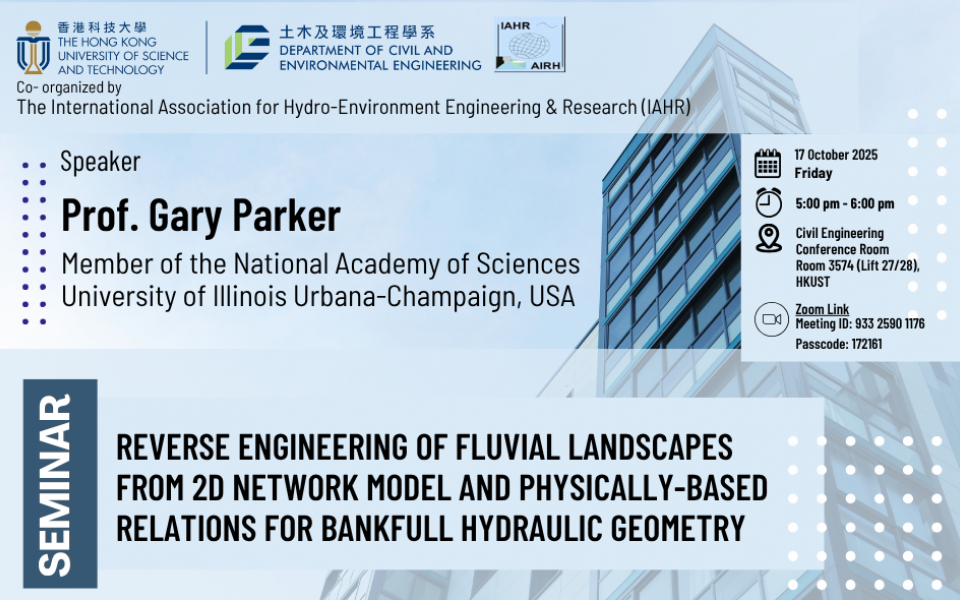Civil Engineering Departmental Seminar - Reverse engineering of fluvial landscapes from 2D network model and physically-based relations for bankfull hydraulic geometry
Supporting the below United Nations Sustainable Development Goals:支持以下聯合國可持續發展目標:支持以下联合国可持续发展目标:
Reverse engineering of fluvial landscapes from 2D network model and physically-based relations for bankfull hydraulic geometry
There are numerous theories describing self-formed 2D drainage networks, and also formulations describing the hydraulic geometry of single self-formed channels. Here we join these together for a complete description of the problem of fluvial drainage networks. Theories predicting 2D networks themselves include purely statistical and topological approaches like random walk models, observational and experimental studies, process-based models, and optimality based models. Natural drainage networks and most simulated drainage networks generated by probabilistic models show self-similarity in the form of power law rules for characteristic parameters such as basin area A, stream length L and stream slope S as related to stream order. Formulations describing bankfull hydraulic geometry, on the other hand, characterize parameters such as bankfull depth H, width W and slope S as power law functions of bankfull water discharge Q and sediment transport rate Qs for a single channel within certain ranges of bed grain size D. We approximate the bankfull water discharge Q of a single channel as a linear function of its basin area A according to the Rational Method of hydrology. We amalgamate a probabilistic model of 2D drainage networks with physically-based relations for bankfull hydraulic geometry of the channels within the network to reverse-engineer a full generic 3D fluvial landscape within a catchment, including relevant channel and hillslope attributes. Our analysis applies to low-amplitude montane landscapes with subdued tectonics. It is fully scalable in terms of catchment area, characteristic gravel grain size and annual precipitation rate. The application we report is for a purely alluvial system, but it is generalizable to systems where bedrock also plays a role.
Professor Parker, a member of the National Academy of Sciences since 2017, received a B.S. from the Department of Mechanics and Materials Science of Johns Hopkins University (1971) and a Ph.D. from the Department of Civil Engineering of the University of Minnesota (1974). Before joining the University of Illinois, he was an Institute of Technology Distinguished Professor in the Department of Civil Engineering at the University of Minnesota. During the period 1995-1999, he also served as Director of the St. Anthony Falls Laboratory, a water resources/fluid mechanics laboratory in the same department. Prof. Parker was elected a Fellow of the American Geophysical Union in 2003, and received the G.K. Warren Award in Fluviatile Geomorphology in 2002. He has received the Schoemaker Award twice and the Ippen Award from the International Association for Hydro-Environment Engineering & Research, and the Einstein Award, Hilgard Prize and Stevens Award from the American Society of Civil Engineers. In addition to numerous journal articles, he has written an e-book, “1D Sediment Transport Morphodynamics with Applications to Rivers and Turbidity Currents.” One of Prof. Parker's major research goals is to use the fundamental techniques of fluid mechanics and applied mathematics to treat interesting geomorphological problems.
